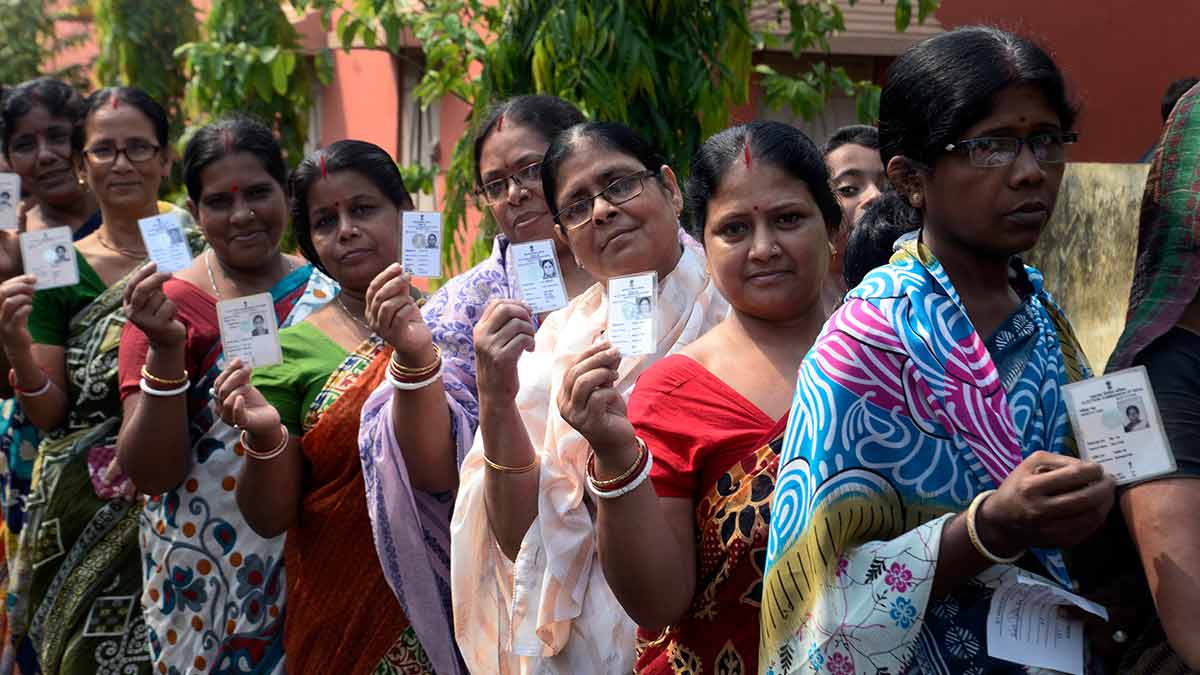
After Years Of Fight For The Right To Vote, Women Voters Surpass Men In Himachal
Women did it again. On November 18, more female voters than males showed up during the Assembly Elections in Himachal Pradesh. They formed about 49.5% of the total vote count, and political parties had a hand in this.
They offered freebies to encourage women to cast their votes. The Congress Party announced the ‘Har Ghar Lakshmi, Nari Samman Nidhi’ scheme where they promised ₹1,500 every month to women. On the other hand, the BJP had made promises under the ‘Stree Shakti Sankalp’ programme.
A constituency-wise data pointed out that women's votes surpassed men’s votes by 4.4 percentage points. In seven constituencies, women voter turnout was 5000 more than men. This difference (8,819) was the highest in Joginder Nagar.
According to reports, the higher percentage turnout of women voters can make a huge difference in 22 Assembly segments in Himachal pradesh.
There can be multiple reasons why women voter turnout is more than men's this term. However, the fact remains that female voters have understood the value of their vote, and they are trying to make their voices heard. This is also not the first time when the number of women voters surpassed male voters.
History Of Voting Rights

Women’s suffrage or the right of women to vote in elections started in the 18th century. The first place, where such a movement took place and maintained its ground, was in New Jersey, USA, in 1776.
In India, the movement started taking shape in the 1900s. Though under Britishers, only a small minority could vote, it was 1950 onwards that universal suffrage officially granted women here the right to vote. It is mentioned under Article 326 of the Indian Constitution.
1
2
3
4
In the Lok Sabha elections of 1962, the participation of women was close to 46%, and it became 58.60% in 1984. In the same period, male voters grew from 63.31% to 68.18% only.
In the assembly elections of 2013, the gap between male and female voters was merely a difference of five percentage points. During the 2014 parliamentary general elections, women voters' turnout was 65.63%, whereas 67.09% of men voted.
Women Voters Surpassed Men In 2019 Lok Sabha Elections

During the 2019 Lok Sabha elections, women's participation was at 67.18%, while men stood at 67.01%. Election Commissioner Rajiv Kumar pointed out that the number of women elected to the lower house of the parliament has also increased from 24 (first general elections) to 78 (2019 LS elections).
Don't Miss: Janhvi Kapoor Makes Meme On Herself & It’s Hilarious
Women Constituted Majority Voters In 2022 Assembly Polls

When the results of assembly polls were declared in March 2022, the number of women voters in four out of five states was more than men. Uttar Pradesh (62.24% women, 59.96% men), Goa(80.96% women, 78.19% men), Manipur (90.5% women, 87.9% men) and Uttarakhand (67.2% women, 62.6% men).
Don't Miss: Priyanka Chopra Jonas Says Actors Do Nothing
A sharp rise has been noticed since 2014 when Narendra Modi was elected the Prime Minister of India. While there are many factors that have contributed to the growth in voter numbers, one of the major ones remains to be the women-centric policies introduced by the ruling government.
For example, the construction of toilets under Swachh Bharat, providing cooking gas cylinders under PM Ujjwala Yojana, and education to girl children under Beti Bachao, Beti Padhao. These schemes and work under them have definitely helped the BJP leaders appeal to female voters, making them the biggest vote bank for Prime Minister Modi.
Also Watch
1
2
3
4